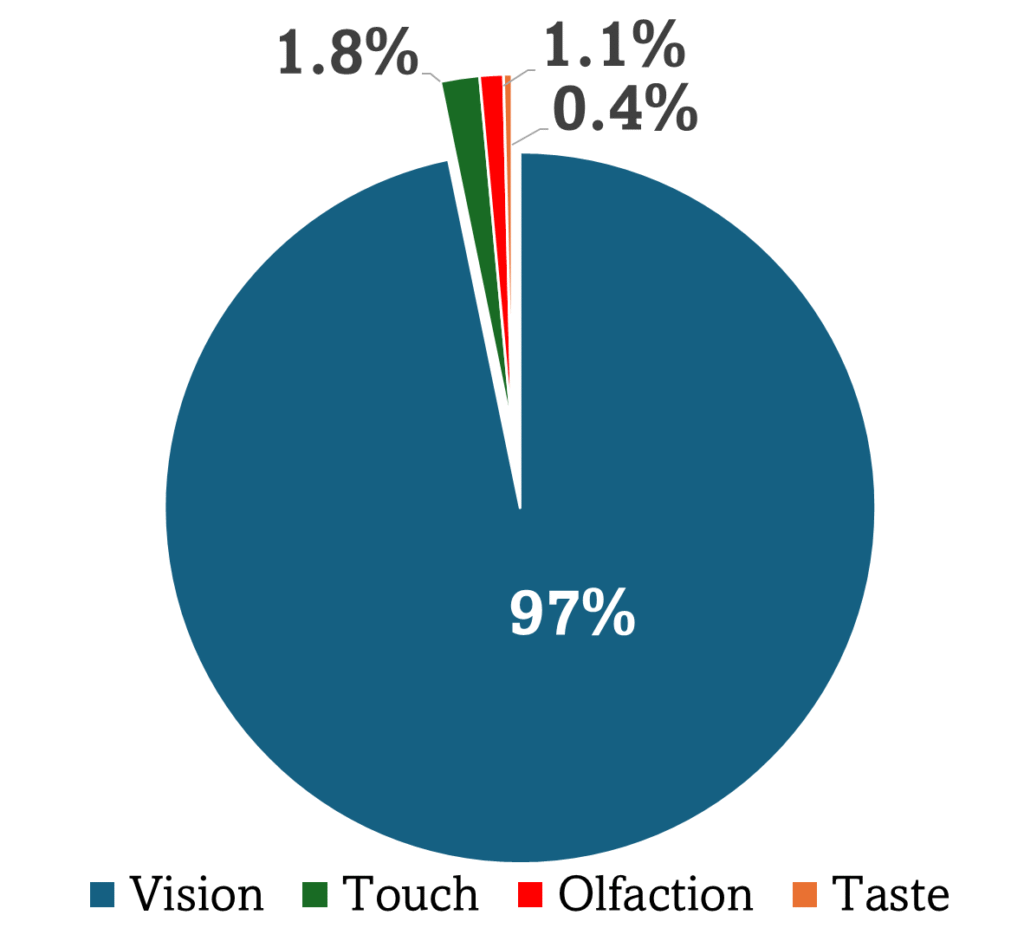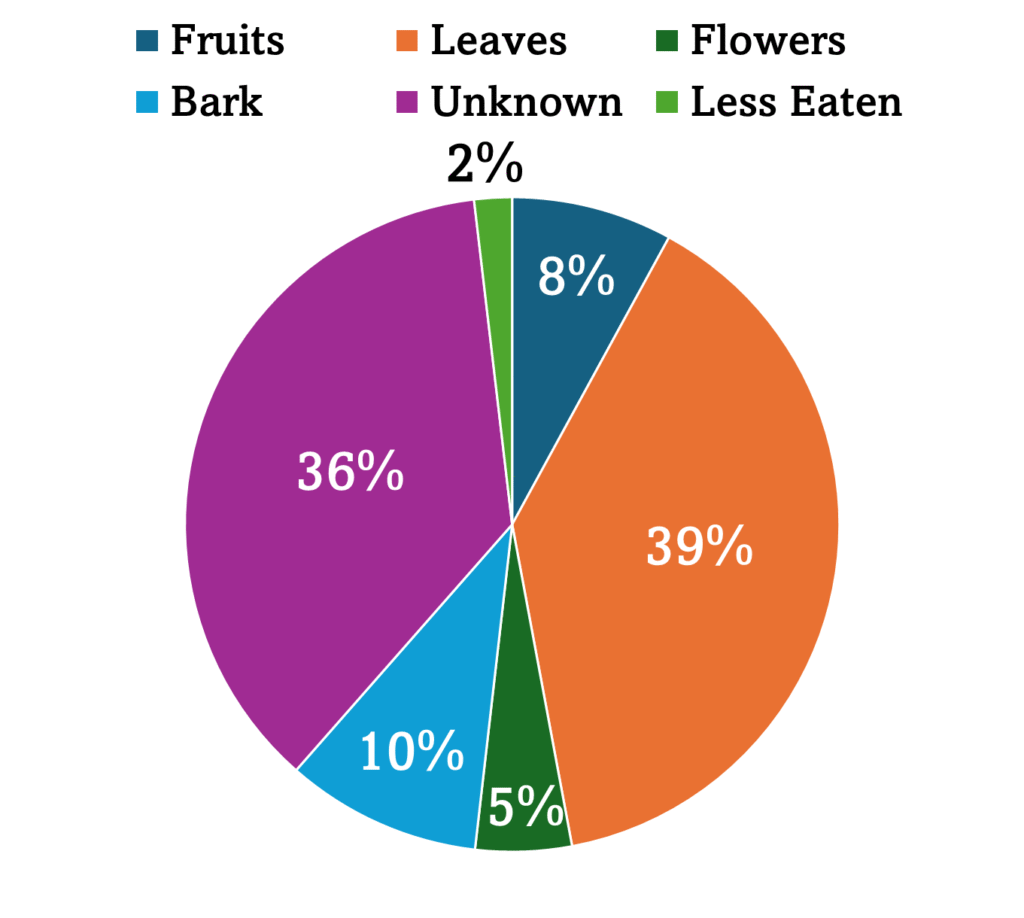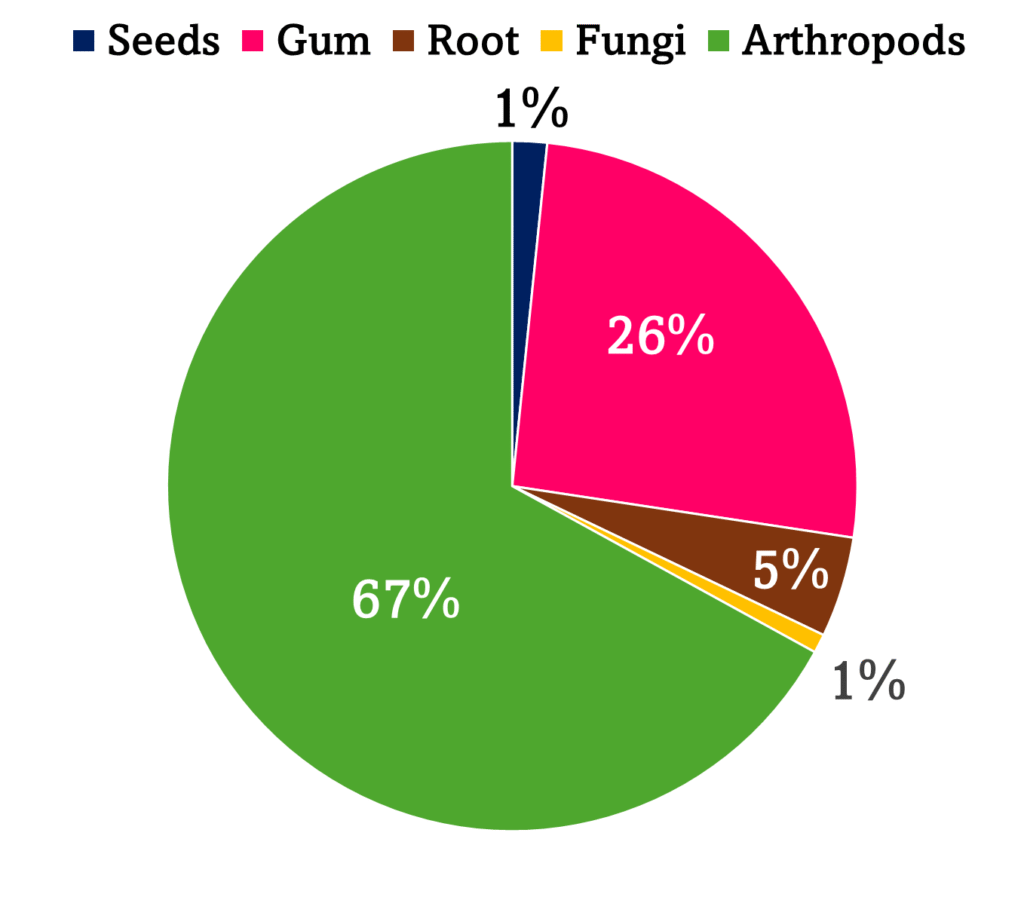1. Senses:
Vision

Other Senses

Vision was the most used sensory modality.
Touch was the most frequently used non-visual sense, followed by olfaction and lastly taste.
These differences were statistically significant, and the use of each sense differed significantly from each other!
2. Food Consumption:
Most Consumed
Food Items

Less Consumed
Food Items

The most frequently consumed food items were leaves and unknown items (typically consisting of materials found on the ground).
Among the less-eaten food items, arthropods were consumed the most.
Differences among food categories were statistically significant!
3. Muzzle Contact:
Being a small sample the results did not turned out to be significant.
Only 30 instances of a focal animal being the recipient of muzzle contact and 24 instances of a focal animal being the initiator of muzzle contact. During muzzle contact, food items such as seeds, gum, roots, fungi, and arthropods, were not seen being consumed by the focal animals.
4. Group Differences:
Sexes
Vision was observed with similar proportions in both sexes. Additionally, consumption happened similarly often between both sexes too.
Females showed a marginally significant tendency to use touch more often than males.
Regarding muzzle contact, the only statistically significant difference found was in receiving muzzle contact, with females being more envolved.
Age Classes
Adults relied on vision significantly more frequently than infants and juveniles. Adults also consumed the food items significantly more often compared to infants and juveniles.
Touch was used most frequently among infants, but none of these differences were statistically significant.
Regarding muzzle contact, adults were the less frequent initiators, but these differences were not statistically significant either.
Social Groups
Vision was employed at a similar proportion in both social groups. Additionally, both groups consumed food at similar frequencies.
Regarding the other senses, olfaction and taste were used similarly often by both groups. However, touch was used significantly more often by group Baie Dankie.
For muzzle contact, there was no significant difference in its use.
4. Familiarity of Food Items:
Sensorial Evaluation during the Corn Experiment
The distribution of behavioural sequences varied across
different types of corn.
Peppermint corn and bitter almond corn had the highest proportion of evaluation sequences, indicating that these varieties required more sensory assessment before consumption.
On the other hand, green corn and red corn exhibited the lowest number of evaluation sequences, suggesting that these types were more readily accepted with minimal assessment.
Differences between the Sensorial Evaluations of the 1st and 2nd Corn Presentations
Coloured Corn
There was a general pattern of lower average frequencies of senses during the 2nd presentation of the corn compared to the 1st presentation. The only significant difference between the 1st and 2nd presentations was found with blue corn.

Scented COrn
The frequencies of senses observed with normal corn and vanilla corn were similar, while bitter almond corn and peppermint corn exhibited distinct patterns that were similar to each other. The only significant difference between the 1st and 2nd presentations was found with peppermint corn.

Coloured-scented corn
The frequencies of the senses observed with red vanilla corn were similar to those with normal corn, followed by blue peppermint corn, while green-bitter almond corn showed a distinct pattern.The only significant difference between the 1st and 2nd presentations was found with green-bitter almond corn.
